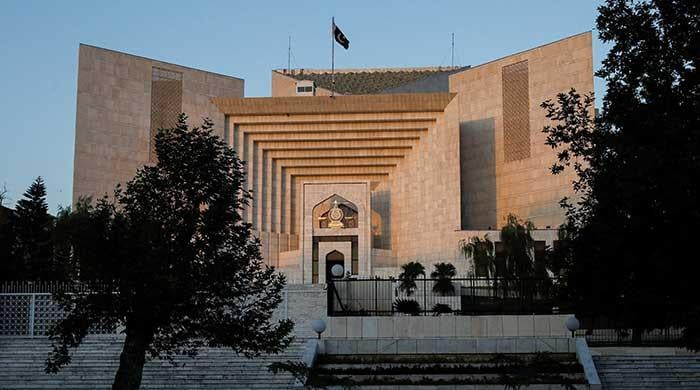Entertainment
Princess Beatrice sees future crumble around her after Prince Andrew, Sarah Ferguson

Princess Beatrice has been hit pretty hard with her father Prince Andrew and mom Sarah Ferguson’s personal woes.
So much so that her chances at a royal future are also looking bleak, according to a well placed source.
This insider shared everything with Heat World during a candid chat and explained that while “the King was previously open to striking some type of compromise with Beatrice especially, one that would see her take on more royal responsibility and potentially ease herself back towards a full-time working position within the family.”
Now “that can’t possibly happen”, because there are many who “would believe it would be rewarding her father by association and the consensus is that a clean cut with the Yorks”.
So as it stands, “as far as business and formal invites at the very least – is what’s necessary.”
For those unversed with the issues plaguing the Yorks, after his late accuser Virginia Giuffre tied Prince Andrew with the convicted sex offender, his ex-wife Sarah was also revealed to have emailed him a written apology after publically denouncing his actions, out of fear of a lawsuit.
According to the source, “this is horrible for the girls, it’s all crumbling around them so quickly and dramatically.”
“This is just heart-breaking for them and they’re very upset with their mother and father, quite rightly so,” she said while signing off.
Entertainment
Four high court judges’ request for pension details triggers resignation rumours

- Four HC judges make verbal queries about post-retirement benefits.
- Seek details of when pensionary benefits will become due.
- Two of four judges to become eligible for pension next month in Dec.
ISLAMABAD: Following the controversial 27th Constitutional Amendment, empowering the Judicial Commission of Pakistan (JCP) to transfer high court judges across provinces without their consent, fresh indications have emerged that as many as four high court judges may be contemplating resignation.
Well-placed sources told The News that these four judges have recently approached their respective high court’s accounts department to seek detailed information regarding their post-retirement entitlements.
Their queries, all made verbally, relate to pensionary benefits, the exact dates on which such benefits become due in two of the cases, the status of their accumulated leave balances, and the depreciated value of the official vehicles currently in their use if they opt to purchase them now.
According to sources, these inquiries have triggered strong speculation within judicial circles that the four judges — already understood to be on the government’s list for transfer after the passage of the 27th Amendment — are actively weighing the option of stepping down instead of being reassigned to new provinces or regions.
Two of the four judges will become eligible for pension sometime in next month- December 2025, leading to uncertainty over the timing of any decision. “If they choose to resign, it is still not clear whether the resignations will come immediately or after they qualify for pensionary benefits,” a source said, adding, “Even if they do resign, there is no clarity on whether they will proceed collectively or one by one”.
The development comes amid reported government plans for judicial reshuffling following the 27th Amendment, which government circles argue is necessary to address the conduct of certain judges who, in their view, have “brought disrepute” to the judiciary.
Others, however, believe that the 27th amendment has badly dented the independence of the judiciary and in such a situation, it is difficult for the “independent minded” judges to continue.
Although the Judicial Commission of Pakistan is constitutionally empowered to appoint and transfer judges, in the present constitution of the JCP government appears to be an advantage.
Originally published in The News
Entertainment
Wrong court, real crisis

As of the end of last year, Pakistan’s courts were sitting on roughly 2.3 million unresolved cases. Nearly 83% were pending in the district judiciary; the remainder was spread across the high courts, the Federal Shariat Court and the Supreme Court.
The SC’s share hovered in the mid-50,000s, a few percentage points of national pendency at most.
Within the superior courts, constitutional work is concentrated rather than dominant: at the Lahore High Court, for example, writ and constitutional matters are about 84,000 out of roughly 179,000 pending cases, close to half of that court’s own docket, yet that entire stock is still a sliver next to the millions of cases stuck below.
Pakistan’s backlog remains, by any measure, overwhelmingly a trial-court problem.
Against that data, parliament has moved with unusual speed. In a short span, a constitutional amendment that creates a Federal Constitutional Court (FCC), shifts constitutional jurisdiction away from the existing Supreme Court and touches sensitive questions of state design has been pushed through, with little committee scrutiny or public engagement.
The government’s explanation is simple. The SC, we are told, is drowning in constitutional and ‘political’ litigation, which has crowded out ordinary appeals. The FCC is offered as the solution: it will take on the constitutional load; the Supreme Court will focus on its appellate role; and the pendency will fall.
The statement of objects and reasons to the Constitution (Twenty-seventh Amendment) Act, 2025 says as much, blaming an “increasing number of constitutional petitions” for delays in regular cases and promising that a specialised court will “significantly reduce pendency”.
That narrative has already been challenged from within the system. Former chief justice Jawwad S Khawaja has taken the amendment back to the court he once led, warning that it will weaken the state, unsettle the separation of powers and erode the consensus around the 1973 constitution.
Since then, the debate has moved from draft to fact. President Asif Ali Zardari has now signed the 27th Amendment into law, creating the new office of the chief of defence forces and establishing the FCC as an operative reality rather than a proposal.
In response, three senior judges, SC justices Syed Mansoor Ali Shah and Athar Minallah, and Lahore High Court Justice Shams Mehmood Mirza have resigned in protest, describing the amendment as an assault on the constitution and on judicial independence.
The question for this piece, however, is narrower: if the claim is that the FCC is about backlog relief for the ordinary litigant, do the numbers support that claim?
The SC’s pending caseload has risen from roughly the mid-20,000s in the mid-2010s to around 40,000 by 2018 and past 50,000 by 2021 into the mid-50,000s in 2024–25.
Set against the nationwide stock already noted above, this makes the apex court a small but visible pocket of congestion rather than the epicentre of delay.
Constitutional work, even where it clusters, is numerically marginal once you zoom out from the superior courts to the system as a whole. Even in high courts where writ and constitutional matters occupy a large share of the local docket, that entire layer sits on top of a system in which more than 2.3 million cases are pending, the vast majority in the trial courts.
On any realistic view, the SC’s constitutional workload therefore sits well below even one or two per cent of the national total; even if every case on its list were re-badged as ‘constitutional’, it would still barely dent the overall numbers.
The court itself has acknowledged that a large portion of its docket consists of review petitions rather than fresh constitutional challenges. And in its own case law on special courts, it has warned that creating new forums or simply adding judges does not cure delay; the real work lies in case and court management, especially in the lower tiers.
Taken together, the data and the doctrine point in the same direction: Pakistan’s backlog is overwhelmingly a trial-court phenomenon. The problem the FCC is meant to solve is numerically marginal.
Under the 27th Amendment, the FCC is designed to exercise original constitutional jurisdiction —including federal–provincial disputes and many fundamental-rights questions while hearing constitutional appeals from the high courts.
The existing SC is recast as largely an appellate tribunal for other work. Ironically, even if one assumes, very generously, that a full one-third of current Supreme Court pendency is “constitutional”, we are dealing with perhaps twenty thousand such cases in a system of more than 2.3 million. On that assumption, the FCC’s core field of operation covers well under one per cent of the pending caseload in Pakistan.
Nor will the FCC simply inherit existing matters and work through them quietly. New courts generate their own litigation – jurisdictional contests between the Supreme Court, FCC and high courts, challenges to composition and appointments, fresh layers of appeal and review. A body created and justified as a relief mechanism for the “ordinary litigant” is, by design, aimed at the smallest and most elite slice of the docket.
All this might still be defensible if the FCC were cheap. It is not. The SC’s budget for 2023–24 is in the region of Rs3.5 billion, largely consumed by salaries and allowances.
A parallel constitutional court, with its own judges, registries, security, infrastructure and staff, will, even if initially lean, operate in the same order of magnitude.
Those billions are being contemplated in the middle of an IMF programme demanding tight fiscal consolidation, cuts in non-priority spending and difficult adjustments in social and development sectors. Meanwhile, the district judiciary, which carries more than four-fifths of the backlog, struggles with basic infrastructure, staff shortages and overburdened judges.
The same capital injected in trial-level capacity in the form of more judges and clerks, reliable process-serving, functional courtrooms, ADR mechanisms, case-flow management and IT would strike at the heart of delay.
Justice Khawaja’s petition therefore, reads less like a personal lament and more like a diagnosis. The amendment, he argues, is “so patently unconstitutional on the face of it” that it ought to have been rejected by parliamentarians sworn to preserve and protect the constitution.
An amendment that strips the SC of its constitutional powers “effectively abolishes [it] as a constitutional court” and is “clearly incompatible with the constitution”.
If the legislature and executive may abolish the highest court and substitute it with another forum manned by their nominees, they are empowered to “change the rules of the game as and when they deem fit” — a result fundamentally at odds with separation of powers and judicial independence.
The federal government asks us to see the FCC as a kindness to the ordinary litigant. The numbers suggest something else: that the new court is aimed not at the backlog of cases that burden citizens, but at the backlog of constitutional questions that burden power.
If it is to be born in the ordinary litigant’s name, the least we owe that litigant is honesty about what problem it is really being built to solve.
Originally published in The News
Entertainment
Claire Danes opens up about ‘shame’ over mid 40s baby news

Claire Danes opened up about feeling a “funny shame” after discovering that she is expecting a baby at the age of 44.
In a recent chat on the Smartless podcast on November 17, the 46-year-old actress revealed she went through complex emotions after getting pregnant with her third child, her first daughter in her mid-40s.
“I was so old when that happened. I was 44,” she told Jason Bateman, Sean Hayes, and Will Arnett on the podcast.
Danes admitted that she “didn’t think it was possible” to expect a child at that age.
The Homeland alum, who is also mom to two sons, 12-year-old Cyrus and 7-year-old Rowan, said that she felt embarrassed after learning about her pregnancy first due to age, and second, she and her husband, Hugh Dancy, were not trying to have another one.
“I did not foresee this at all. And it was weird. Suddenly, I felt like a funny shame,” she explained.
“I was naughty. I had been caught fornicating past the point I was meant to. No, it was weird, and it was like I found an edge that I hadn’t been quite conscious of — like I was going outside of the parameters a little bit.”
Danes had her first child, son Cyrus, in 2012, then her second son, Rowan, in 2017, and finally her third child, her first daughter, in 2023, whose name has been kept under wraps.
-

 Tech1 week ago
Tech1 week agoFrom waste to asset: Turning ethanol production CO₂ into jet fuel
-

 Tech3 days ago
Tech3 days agoNew carbon capture method uses water and pressure to remove CO₂ from emissions at half current costs
-

 Politics4 days ago
Politics4 days agoBritish-Pakistani honoured for transforming UK halal meat industry
-

 Sports3 days ago
Sports3 days agoTexas A&M officer scolds South Carolina wide receiver after touchdown; department speaks out
-

 Tech1 week ago
Tech1 week agoSecurity flaws in portable genetic sequencers risk leaking private DNA data
-

 Sports1 week ago
Sports1 week agoSteelers vs. Chargers (Nov 9, 2025) Live Score – ESPN
-

 Fashion5 days ago
Fashion5 days agoAdidas & Patrick Mahomes expand NIL programme with Texas Tech athletes
-

 Business4 days ago
Business4 days agoWhat’s behind Rachel Reeves’s hokey cokey on income tax rises?





